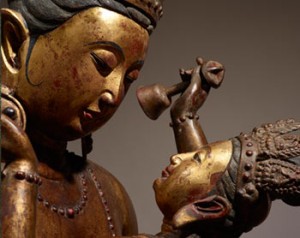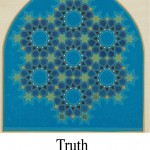Tantric practices were first designated as distinct from those of other paths by extensive use of mantra. Vajrayana was sometimes labeled Mantrayana. Mantra (Sanskrit for “protection”) is the repeated vocalization of designated sounds in order to protect the mind from its ordinary ego-serving pathways and dedicate awareness to its original nature.
Tantric practices, unlike other Buddhist vehicles, explicitly use the body as the path. Visualization makes use of the power of sight to bring the outside in and the inside out, to dissolve the boundary of our body. Breath control, gestures (mudras), and positions of the body (yogic asanas) are tools to stimulate and direct the flow of energy, along with extensive ritual performances ordering and purifying space and summoning and dispelling energies.
This exhibition of sculptures and textiles is the first presentation drawn from a collection of tantric art recently acquired by Trammell S. Crow. It inaugurates a series of presentations and programs that will unfold over the coming years, exploring the rich tradition of tantric art made in the Himalayan regions to serve the practices that developed there as Vajrayana Buddhism (in Sanskrit Vajra means “indestructible” and yana means “vehicle” or “path”).
When: Saturday, March 31, 2012 – Sunday, January 5, 2014, Crow Collection Hours
Where: The Crow Collection of Asian Art, 2010 Flora Street, Dallas, TX 75201
Price: Free, suggested donation
Link: http://www.crowcollection.org/current_exhibitions.aspx






